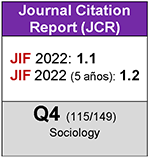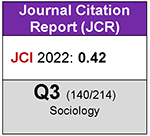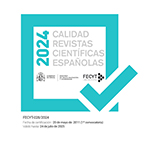La organización de la respuesta
innovación y recuperación en las salas de operaciónes financieras del Bajo Manhattan
DOI:
https://doi.org/10.5477/cis/reis.107.89Keywords:
Theory of Organizations, Heterarchy, Planning for Emergencies, Socio-technical Networks, Economic Geography, Eleventh of September [2001]Abstract
What is the organizational basis of the capacity for recovery from a crisis? In this study, we
examine a financial operations room that was damaged in the attack on the World Trade Center on
11th September 2001. What does the crisis reveal about social practices and the technological
instruments of buying and selling? Taking as the point of departure our field research carried out
prior to the eleventh of September, we demonstrate how the heterarchical (as opposed to the
hierarchical) organization of the operations room spontaneously stimulated innovations, as events
developed. Through the observations we have made after the attack, as well as approach groups
with executives from various World Trade Center financial companies, we show that the
heterarchical characteristics contributed to innovation in the response to the crisis. Under conditions
of radical uncertainty, it is not possible to know beforehand about the resources that will be
necessary, or even know in advance what a resource could be. Laterally distributed intelligence and
the tolerance of multiple appraisal and interaction registers provide generative structures in which
the replicative redundancy of planning for emergencies faces its limits. We conclude with a brief
discussion of the implications that our findings on innovation, location and capacity for response
have for present-day changes in the urban geography of finance in Lower Manhattan.
Downloads
Downloads
Published
How to Cite
Issue
Section
License
Copyright (c) 2024 Revista Española de Investigaciones Sociológicas

This work is licensed under a Creative Commons Attribution-ShareAlike 4.0 International License.
Permite Compartir — copiar y redistribuir el material en cualquier medio o formato, Adaptar — remezclar, transformar y construir a partir del material para cualquier propósito, incluso comercialmente.








